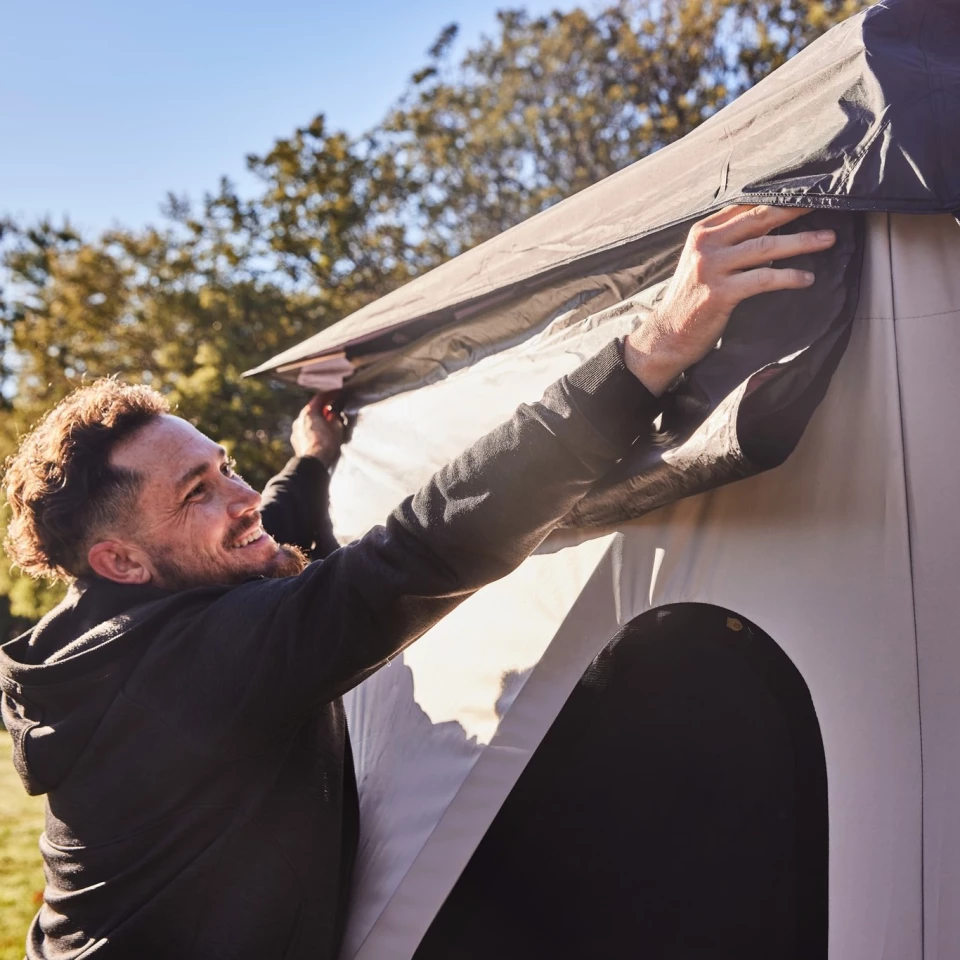Many campers will put up a tarp, pitch a tent underneath that tarp, then put an inflatable mattress inside the tent. Space Acacia is designed to makes things simpler, by combining all three components in one camping system.
Manufactured by New Jersey-based startup Acacia, the Space Acacia setup consists of a five-sided pop-up tent, a roll-out canopy which is built into that tent, and a 6-inch (152-mm)-thick inflatable floor to which the tent gets attached.
The tent is made of 300-denier waterproof-coated Oxford cloth with integrated fiberglass poles. It has eight zippered screen windows, four mesh pockets for storing bits and bobs, plus a port for attaching an optional air conditioning unit.

The canopy, which rolls out from beneath the tent's eaves, is made of 150-denier waterproof, SPF50 UV-blocking Oxford cloth.
In hot weather it can be extended out from the sides of the tent, allowing warm air to move unimpeded out of the tent's opened windows. In cold weather, though, it can be left down to provide extra insulation. According to the designers, use of the canopy in this manner allows the tent's interior to stay 10 ºF (6 ºC) warmer than the temperature outdoors.

Finally, there's the floor. It's made of waterproof 4-ply PVC, and is claimed to be "constructed to the same specifications as expedition-grade inflatable kayaks." Using an included electric pump, it gets inflated to a maximum pressure of 10 psi (0.7 bar) in less than 15 minutes – it can then reportedly withstand a load of over 4,000 lb (1,814 kg) without popping.
The entire floor is covered in a soft carpet that can be removed for washing. And as an added bonus, the floor and the attached tent will float on the water, allowing users to sort of go "houseboat camping."
The Space Acacia system is currently on Indiegogo, and is being offered in Standard and XL sizes – the former sleeps sleeps two to three people, while the latter accommodates up to six. Pledges run from US$999 for the Standard up to $1,149 for the XL – the planned retail prices are $1,236 and $1,437, respectively.
There's more information in the following video.
Source: Indiegogo






